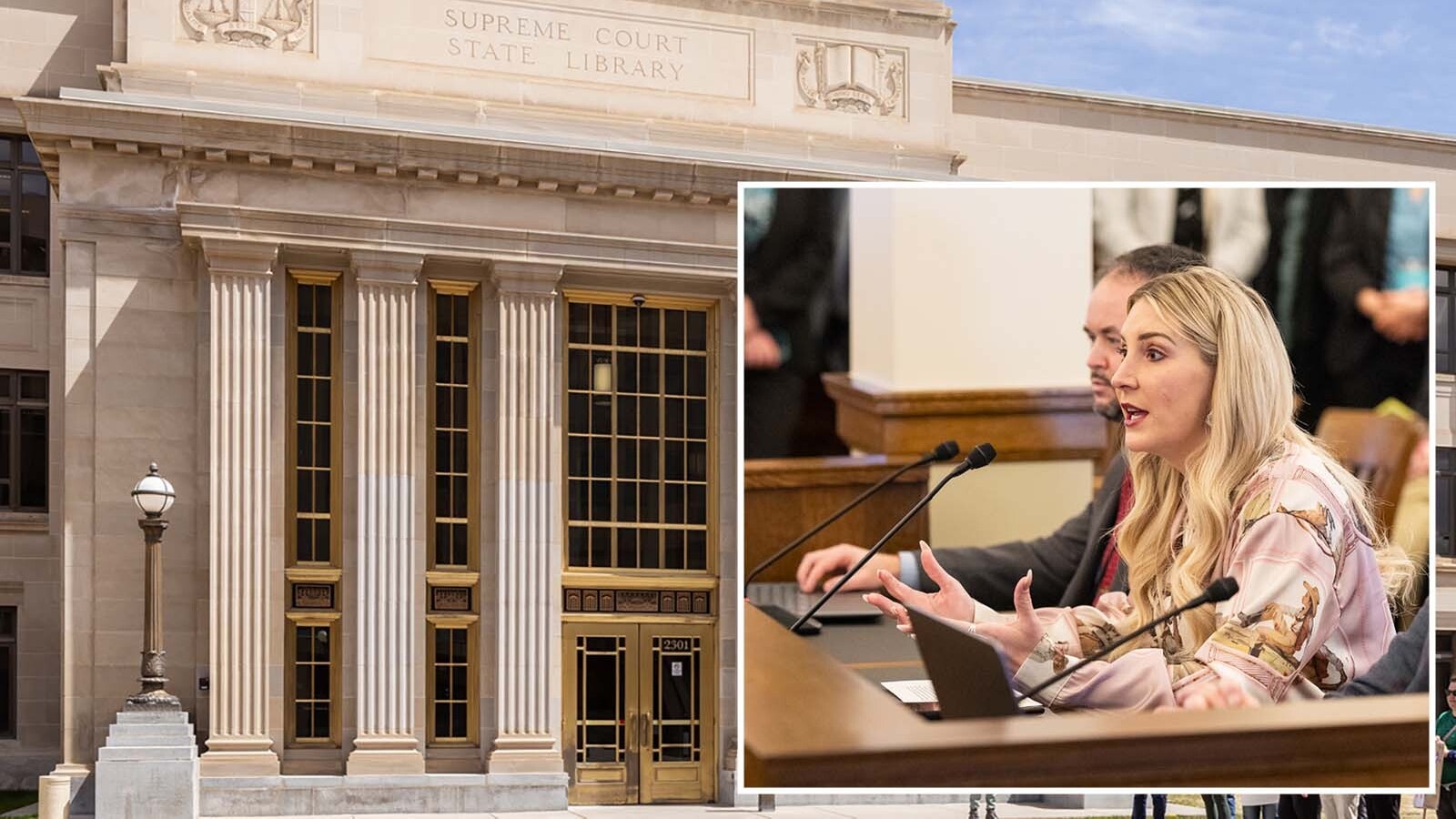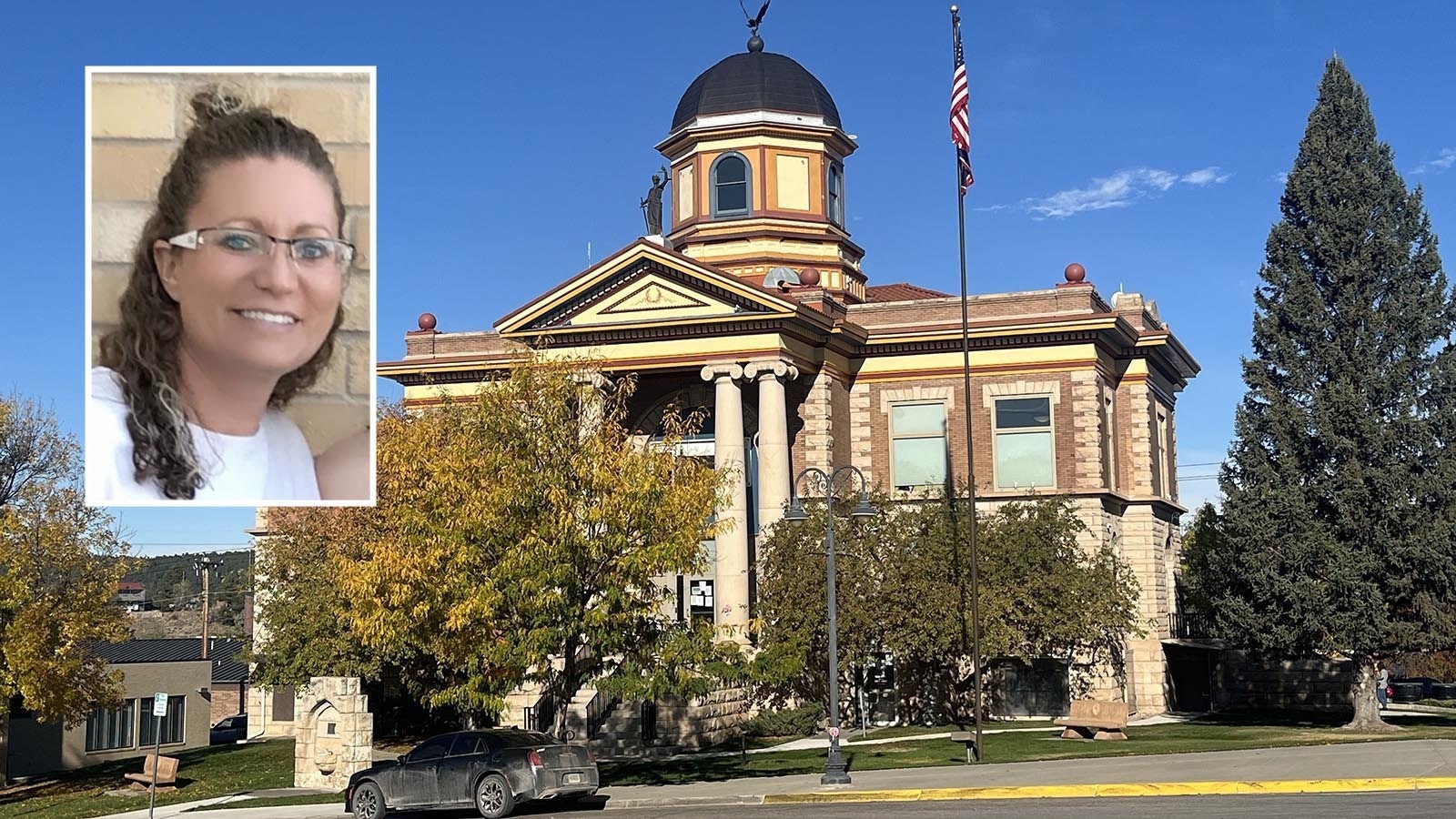Wyoming’s 2024 primary election will not be remembered for voters storming the polls with long lines at polling places and breaking turnout records.
In fact, it will likely be remembered for just the opposite, as only 122,693 ballots were cast Tuesday, the lowest election vote turnout in a Wyoming primary since 2016. Based off the most recently available registration total from Aug. 1, 54% of registered voters participated. The final tally will be a lower percentage to account for those who registered after then or on Election Day.
Comparisons
Since the 2022 primary saw record turnout thanks to the high-interest race between U.S. Rep. Harriet Hageman and former congresswoman Liz Cheney, the best comparison for Tuesday’s numbers would be to the 2020 primary, which was also the last presidential year. In that election, 140,042 people cast ballots.
Also, that even the 2018 primary still had a much higher turnout than Tuesday is also notable when considering that turnout in presidential election years is much higher than for midterm elections.
Although a roughly 17,000-voter drop-off from 2020 may not seem like a significant difference, it is considering the state’s population has grown since that time. Also, in small-population counties like Niobrara and Weston, the difference of a couple hundred voters can greatly swing the result of an election.
Smaller rural counties had numbers similar to 2020 though, but larger areas like Albany and Campbell counties dropped off significantly for ballots cast, falling by 22% and 24% respectively.
One of the races with the biggest dip from 2022 was for House District 9 in Cheyenne, where only about 1,400 people cast ballots, compared to the 2022 primary when there were about 2,100, a 33% decrease. Rep. Landon Brown, R-Cheyenne won this race Tuesday night by a razor-thin margin of 17 votes.
Many Upsets, Close Calls
Tuesday night was a win for the farther right Wyoming Freedom Caucus, which is now set up to gain up to around 11 seats through a combination of unseating incumbents and filling the seats of departing legislators aligned with the more moderate Wyoming Caucus with their own members.
The incumbents who went down represented some of the biggest names in the Wyoming Legislature, like House Speaker Albert Sommers, R-Pinedale; and Reps. Dan Zwonitzer, R-Cheyenne; Tom Walters, R-Casper; Ember Oakley, R-Riverton; and Clark Stith, R-Rock Springs. All had decades of combined experience and significant standing within the legislative body.
Mark Rozell, founding dean of the Schar School of Policy and Government at George Mason University, told Cowboy State Daily that voter turnout on a national level was sometimes lower than it is today in presidential elections because many voters didn't have a strong preference for who was elected president.
That's a stark contrast to now, where a deep political divide separates the Republican and Democratic parties, which Rozell doesn’t consider "necessarily a good thing for politics."
"One of the dangers in democracy is the loss of the public middle, the loss of policy making and working across the aisle." he said.
Rozell said one obvious characteristic of low-turnout elections is that those who do vote are often some of the most engaged politically.
"The people who turn out are the people with the greatest political intensity and ideology, single-issue voters," he said. "The people who turn out are not representative of the general rank and file party member who is more likely to turn out for the general election."
But in a state like Wyoming where primary elections mostly determine the final result of legislative races, turnout in the primary is particularly critical.
Extreme Elements
Statistically speaking, when fewer people vote in an election, there’s a higher chance of having close races simply because the overall pool of voters is smaller. As a result, a burst of new information, such as an attack mailer or social media post that sways public opinion, will likely have a larger impact on the final result of the race because less people are voting.
Rozell said low turnout elections have a tendency to allow more extreme candidates on the far left and far right to win elections, as an aggressive mobilization effort can have a larger impact on the final result.
"They could overwhelm the competition far more in a low turnout affair," he said.
Brown believes the low voter turnout played directly into the many upsets and close races seen around Wyoming on Tuesday. One thing he noticed while door knocking for his campaign was the number of people who didn’t even know an election was happening.
Brown also believes the Freedom Caucus was able to do a better job capitalizing on fears and emotions people in Wyoming are having about their future.
“Whether it’s good or bad or either way, I think the election was a microcosm of what the state is going through and is dealing with some growing pains,” he said. “There’s a lot of emotional voting and we’ll see how it plays out over the next two years.”
But the chairman of the Freedom Caucus, Rep. John Bear, R-Gillette, also expressed disappointment about the low turnout when reached early Wednesday morning. He mentioned how the Freedom Caucus took some big losses too, even if it wasn’t as many as the Wyoming Caucus suffered to its ranks, with prominent legislators like Reps. Jeanette Ward, R-Casper, and Mark Jennings, R-Sheridan, going down Tuesday.
One thing that many of the incumbents on both sides who lost on Tuesday share in common is larger name recognition. Ward, Sommers, Stith and Zwonitzer were all aggressively targeted, and for a voter who was already familiar these lawmakers, it’s not a leap to say that message could have resonated.
Even many of the incumbents who won did so while fighting off tough challenges.
Rock Springs Republican Reps. Cody Wylie and J.T. Larson won their races by less than 100 votes and Rep. Lloyd Larsen, R-Lander, didn’t pull into the lead until the absentee votes were counted in his race.
Crossover Confusion
Although the Equality State Policy Center and others mounted an informational campaign this spring to inform voters about changes in Wyoming law that made it illegal to change party affiliation after the candidate filing period opened, Marissa Carpio, a staffer with the Equality State Policy Center, still believes these changes in dampened turnout.
“We were really hoping for some of the state agencies to have sent out information earlier and clarified the new laws earlier,” she said. “There was a concerted effort to not do that.”
Carpio said she also heard stories of unaffiliated voters being turned away for a ballot even when they could have voted in nonpartisan mayoral and city council races. Others, she said, falsely thought the new law meant that they couldn’t vote at all if they didn’t register by the May party affiliation deadline, when in fact if they weren’t registered, they could do so and vote as late as election day.
She also worries that voter apathy is also being fueled by the divisive nature of today’s national and state politics.
“That has to be a part of it,” she said.
Voter participation tends to always spike for presidential elections and Carpio is optimistic that Wyoming voting will back up for the November election. Early and absentee voting for that election begins on Oct. 8.
“Hopefully the voter turnout will be higher but presidential elections can still be affected by apathy, and questions of when, where, and how to vote,” she said.
Leo Wolfson can be reached at leo@cowboystatedaily.com.









